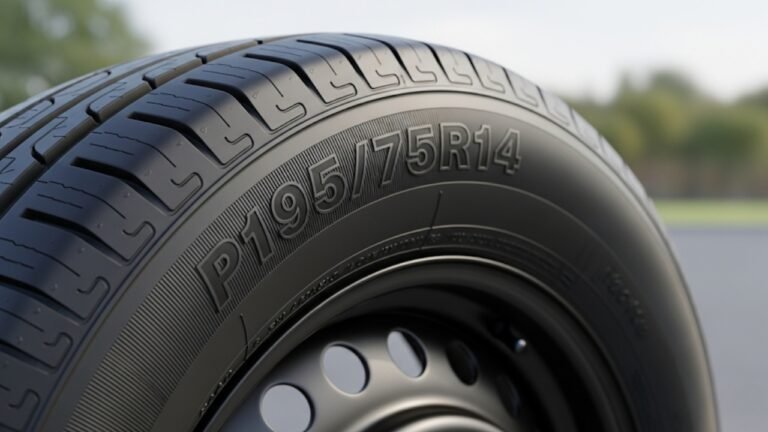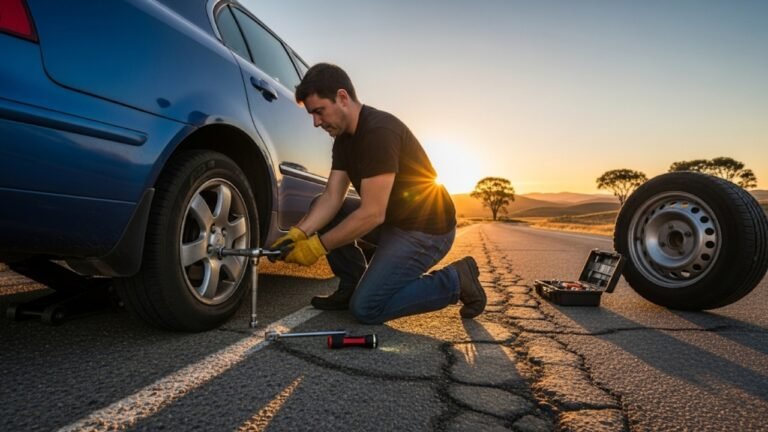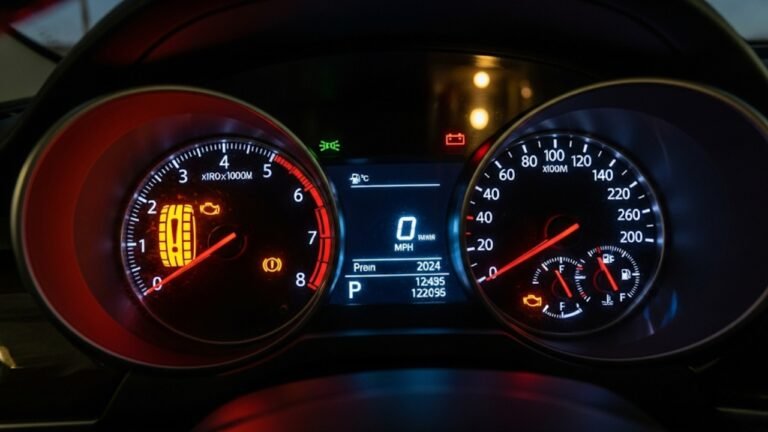What to Do If Tire Pressure Is Low? A Friendly Guide
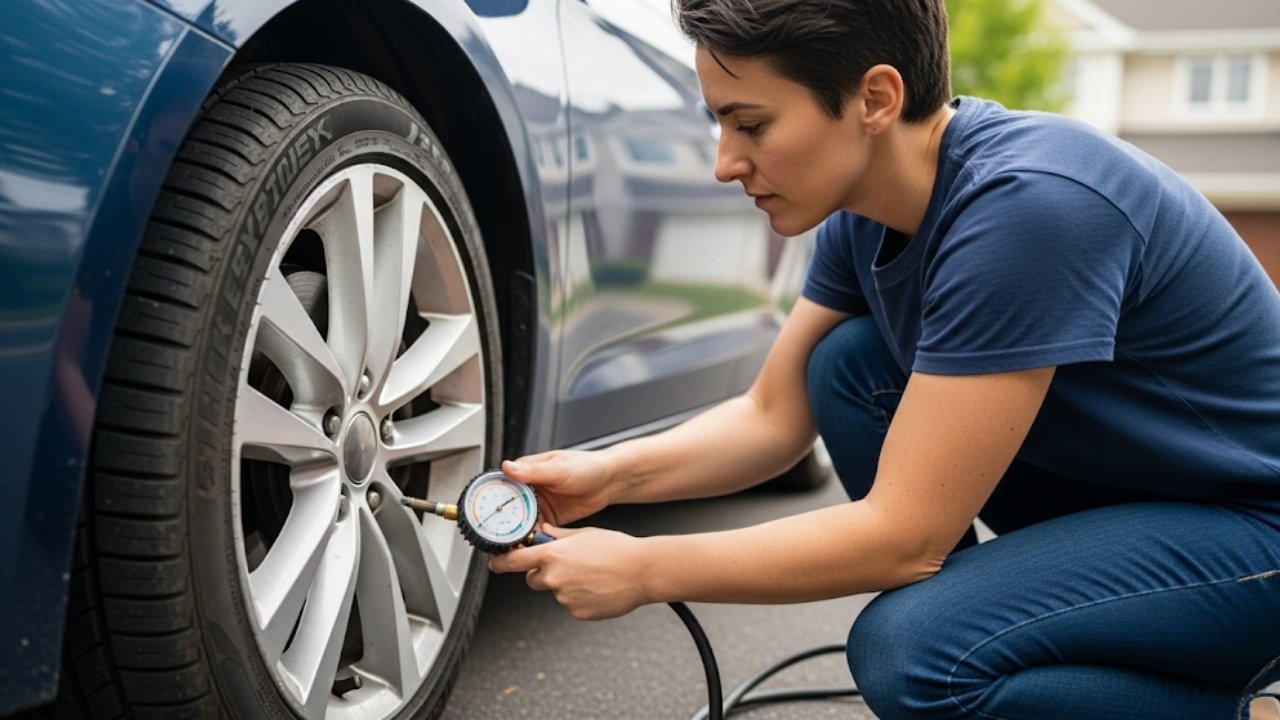
It happened to me last winter. I was driving to a friend’s wedding, dressed to the nines, humming to Bollywood beats, when a yellow icon blinked on my dashboard. That horseshoe-shaped light with an exclamation point – the tire pressure warning – glared at me like a disapproving parent. My heart sank.
Sound familiar?
If you’re like most people, you’ve probably asked yourself at some point, “What to do if tire pressure is low?” It’s one of those questions you never want to ask on a Monday morning when you’re already late for work. But trust me, dealing with low tire pressure doesn’t have to be scary, expensive, or time-consuming — if you know what to do.
In this guide, I’ll walk you through the entire process like a good friend would. No confusing jargon. Just relatable stories, smart tips, and everything you need to know to stay safe and extend your tire life.
So, if you’re ready, let’s dive in — before your tire does.
What Does Low Tire Pressure Mean?
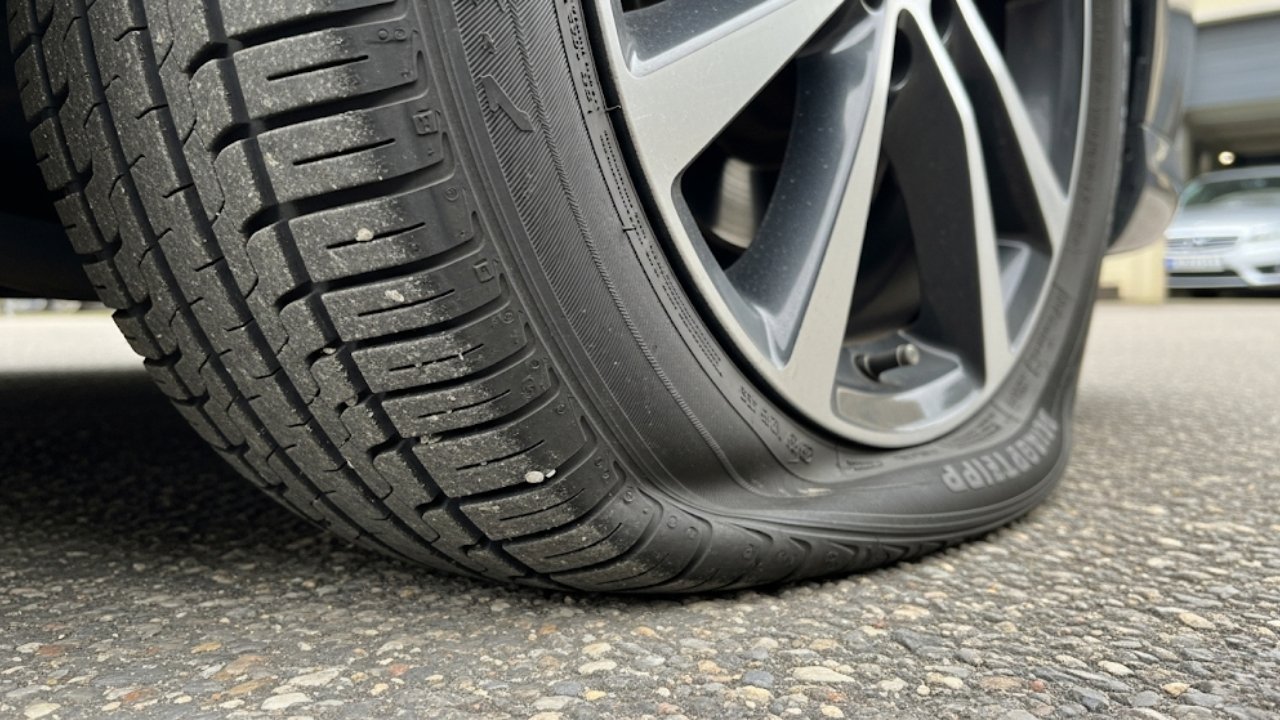
Your tires are like your car’s shoes. Just like walking in loose or flat shoes feels off, driving with under-inflated tires creates instability and drag. When the pressure inside drops below the manufacturer-recommended PSI (pounds per square inch), it reduces grip and increases wear.
Here’s what happens when pressure is too low:
| Issue | Real-Life Impact |
|---|---|
| Poor handling | Steering feels loose or car pulls to one side |
| Reduced fuel economy | You burn more fuel – like jogging in boots |
| Tire blowout risk | Heat builds up, especially on highways |
| Uneven tire wear | Tread wears out faster, costing more in replacements |
Now imagine you’re on a long road trip with family. The last thing you want is a tire blowout in the middle of nowhere. That’s why ignoring a tire pressure warning is like ignoring chest pain during a jog — it could be harmless, or it could be dangerous.
First Thing First: Check That Tire Pressure Warning Light
If that dreaded dashboard light pops up, don’t panic. Breathe.
The TPMS (Tire Pressure Monitoring System) in most modern cars is designed to alert you when one or more tires are underinflated. But here’s the tricky part — it doesn’t always tell you which one. That’s where your intuition and tools come in.
Here’s a quick step-by-step of what to do if tire pressure is low:
-
Park safely. Preferably in a flat, open area. Avoid hills.
-
Check visually. Walk around and look for visibly sagging tires.
-
Use a tire pressure gauge. Don’t rely on the light alone.
-
Compare with your car’s PSI recommendations. Usually found on a sticker inside the driver’s door or in your manual.
-
Inflate or deflate accordingly.
A handheld pressure gauge costs under $10 and takes just seconds to use. It’s a tiny tool with a massive impact — like a thermometer for your car’s health.
⛽ Where to Inflate Your Tires — It’s Easier Than You Think
Now comes the practical part: fixing it. Once you’ve identified which tire (or tires) is low, you’ll need to add air. Don’t worry — it’s not rocket science. You don’t need to be a mechanic or even particularly handy.
Here are your options:
-
Gas stations: Most have air pumps, often free or coin-operated.
-
Tire shops or garages: They’ll do it for you, sometimes for free if you’re a customer.
-
Portable inflators: These plug into your car’s cigarette lighter or battery and inflate your tires on the spot.
-
Bike pump (in emergencies): It works for smaller top-ups, though it takes time.
Pro tip: Always carry a few quarters in your glove box. Air pumps can surprise you with their coin demands.
When using a gas station pump:
-
Unscrew the tire valve cap.
-
Attach the pump nozzle firmly.
-
Inflate slowly while checking the PSI.
-
Replace the cap.
Try not to overinflate. That can be just as dangerous as underinflation. If you go over slightly, release a little air by pressing the valve pin.
How to Read the Correct Tire Pressure
Ever seen those numbers on your tires like “Max 44 PSI”? Don’t be fooled — that’s the maximum limit, not the recommended level.
Your car’s ideal PSI depends on:
-
Vehicle weight
-
Tire type
-
Driving conditions
You’ll usually find the right PSI on a label inside the driver’s door, glove box, or in your owner’s manual. It’s usually between 30–35 PSI for most passenger vehicles.
Important: Always check PSI when tires are cold. Driving heats them up, which affects readings. I like to check mine first thing in the morning — before school runs or weekend drives.
️ What Causes Low Tire Pressure?
I used to think tires just deflated when they were old or punctured. But over time, I learned it’s not always so straightforward.
Here are common reasons your tire pressure might be low:
-
Temperature changes: A 10°F drop can reduce pressure by 1–2 PSI.
-
Slow leaks: Tiny punctures from nails or debris.
-
Valve stem issues: Damaged or worn-out valve stems can leak air.
-
Rim damage: Especially in older cars or after hitting potholes.
-
Neglect: Let’s be real — we forget to check them regularly.
It’s like our health. You don’t always feel the symptoms right away, but ignoring the signs can lead to bigger problems later.
Moral of the story? Check your tires once a month. Make it a habit — like brushing your teeth or checking your phone notifications.
What Happens If You Keep Driving on Low Tire Pressure?
Let me tell you a story.
Last year, my cousin ignored his low tire warning during monsoon season. Two weeks later, his front tire blew out on the highway, causing a spin. Thankfully, no one was hurt. But the repair bill? ₹15,000 — plus towing.
Here’s what really happens when you keep driving with low tire pressure:
-
Your handling worsens. Turning feels sluggish.
-
Tire walls get weak. Over time, the structure weakens from inside.
-
Heat builds up. Low pressure = more friction = more heat.
-
You lose mileage. More air drag means more fuel burned.
-
You risk blowouts. Especially at high speeds.
In short, it’s not worth it.
Low tire pressure is like walking around with a sprained ankle — manageable at first, but painful and risky the longer you ignore it.
Signs Your Tire Pressure Is Too Low (Even Without the Warning Light)
Sometimes your TPMS doesn’t warn you in time. That’s why knowing the physical signs is crucial — just like recognizing symptoms of a cold before it becomes the flu.
Watch out for:
-
The car pulling to one side
-
Wobbly or vibrating steering wheel
-
Uneven tire shape
-
More noise from the wheels
-
Increased stopping distance
Here’s a quick metaphor — imagine trying to run on a soft sand beach versus a paved sidewalk. That’s how your car feels on underinflated tires. It works harder, burns more energy, and loses stability.
Temporary Fixes: What to Do in a Pinch
Let’s say you’re stuck somewhere — a remote highway, in the hills, or during heavy rain. The tire pressure is low, and there’s no air pump in sight.
Here’s what you can do temporarily:
-
Use a portable inflator if you have one.
-
Drive slowly. Avoid highways until you can fill air.
-
Redistribute weight. Lighten your load if the trunk is full.
-
Avoid hard braking and sharp turns.
This is just to get you to safety — not a long-term solution.
How to Prevent Low Tire Pressure in the First Place
You’ve heard the saying — “Prevention is better than cure.” That applies to tires too.
Instead of waiting for the warning light to ruin your day, build a few simple habits. Think of it like eating fruits every morning — small efforts with big rewards.
Here’s what works for me:
-
Check tire pressure once a month. Set a reminder on your phone or pair it with a routine — like refueling or washing your car.
-
Keep a digital pressure gauge in your glove box. They’re cheap, compact, and super accurate.
-
Inspect your tires visually. Look for cracks, bulges, or uneven wear.
-
Rotate your tires every 6,000–8,000 km to ensure even wear.
-
Get an alignment check after hitting big potholes or curbs.
And remember — always check pressure when the tires are cold, ideally in the morning. Air expands when warm, which can give false readings.
Building these habits isn’t just about keeping tires inflated — it’s about saving lives, money, and unnecessary stress.
❄️ Does Tire Pressure Change With the Seasons?
Absolutely — and this is something most people don’t realize until they’ve faced a flat tire in winter.
Let’s break it down:
In Winter:
-
Cold air condenses, lowering pressure.
-
Even new tires lose 1–2 PSI for every 10°F drop.
-
Your dashboard warning light will often blink on chilly mornings.
In Summer:
-
Hot air expands, raising pressure.
-
Overinflated tires can cause a bouncy ride and wear unevenly.
So, what’s the solution?
Adjust your pressure seasonally.
In winter, add a little more air. In summer, check for over-inflation and release if needed.
It’s kind of like layering your clothes based on weather — your car needs those seasonal adjustments too.
How Much Does It Cost to Fix Low Tire Pressure?
Here’s some good news — maintaining the right tire pressure is one of the cheapest things you can do for your car.
Here’s a simple breakdown:
| Service | Average Cost (INR) | Notes |
|---|---|---|
| Air refill (at gas stations) | Often free or ₹5–₹20 | Self-service or staff-assisted |
| Digital gauge (one-time) | ₹300–₹800 | Keep it in your car |
| Portable inflator | ₹1,500–₹3,500 | Great for emergencies |
| Tire repair (for punctures) | ₹100–₹300 | Depending on location/type |
If your tire has a slow leak, getting it patched early is always cheaper than replacing it later. Ignoring the issue could mean spending ₹5,000–₹10,000 on a new tire.
Trust me — I learned this the hard way on a road trip to Darjeeling when a ₹200 repair turned into a ₹6,000 replacement just because I waited too long.
Expert Tips to Maintain Tire Health
Want to go the extra mile (pun intended)? Here are some expert-backed tips to keep your tires in top shape and avoid the dreaded low-pressure light:
-
Check all four tires — not just the visibly low one. Sometimes, more than one may be underinflated.
-
Don’t forget the spare! A flat spare is useless in emergencies.
-
Keep tires clean. Dirt around the valve can cause leaks.
-
Avoid cheap tire caps. They might crack in heat or rain, letting air escape.
-
Stick to trusted brands. Good tires save money long-term.
And if your car is heavily loaded (like during vacations), slightly increase pressure to handle the weight better — but always stay within the recommended range.
FAQs: What to Do If Tire Pressure Is Low?
Here are the most common questions people ask when dealing with low tire pressure — answered in plain language.
1. Can I drive with low tire pressure for a short time?
Yes, but only for a short distance and at low speed. It’s meant to get you to a safe place, not for regular driving.
2. How do I know the correct tire pressure for my car?
Check the sticker inside your driver’s door, or your owner’s manual. Never go by the “max PSI” printed on the tire itself.
3. How often should I check my tire pressure?
Once a month is ideal. Also check before long trips or carrying heavy loads.
4. Does low tire pressure always mean there’s a puncture?
Not necessarily. It could be due to temperature changes, natural air loss, or a minor valve issue.
5. Is it okay to slightly overinflate to avoid underinflation?
No. Overinflating can lead to poor traction and uneven wear. Stick to the recommended PSI range.
6. Do electric vehicles or hybrids have different tire pressure needs?
They may — check your specific model. EVs are heavier, so tire pressure is even more crucial for efficiency and safety.
7. Should I use nitrogen instead of air?
Nitrogen maintains pressure longer, but it’s not essential. Regular air works just fine if you check it often.
8. Can weather alone drop my tire pressure overnight?
Yes, especially during cold snaps. A 10°C drop can lower PSI enough to trigger your TPMS.
Real Talk: My Personal Advice on Dealing with Low Tire Pressure
Let’s be honest — car maintenance can feel overwhelming. Between oil changes, insurance, filters, and service schedules, who has time to worry about tire pressure?
But here’s what I’ve learned after a few panicked roadside moments, late-night YouTube tutorials, and one embarrassing call to a mechanic who just filled my tires and charged ₹100.
Tires are literally what hold your life up off the ground.
Ignoring them because you’re “too busy” is like ignoring your heartbeat.
Take 5 minutes once a month. Keep a pressure gauge and a portable pump in your trunk. If the light comes on, don’t panic. Breathe. Follow the steps you’ve learned today.
It’s one of those rare car tasks where you don’t need tools, training, or help — just a little attention.
And the payoff? Smoother drives, fewer emergencies, and peace of mind.
Conclusion: Be the Hero of Your Own Drive
Low tire pressure isn’t a crisis — it’s a reminder.
A little care goes a long way. The next time your dashboard light blinks, you won’t panic. You’ll smile, pull over, and handle it like a pro.
Because now you know exactly what to do if tire pressure is low — and that knowledge keeps you, your family, and your wallet safe.
So go on. Be your own roadside hero.

